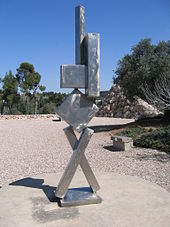
The USA is very unhappy. In particular the poor and the near poor who are mostly women and minorities are unhappy. Frustrated. Bordering on angry.
The art scene has lost all gusto and art no longer enjoys the support and prestige it had even in recent memory. Social media has utterly changed the cultural landscape. The president is unique in his persona. He is ”making America great again” through various hard-headed strategies , starting: trade wars, tightening up on immigrants, and subsidizing the wealthy through enhanced tax advantages only they can activate.
Confidence and the ability to energise the will of the many was a hallmark of American life and was reflected in the art scene. But the art scene has changed. To put it simply, private dealers are vanishing as a source of energy. It is more difficult to keep their shop open. Money is scarce. Now Art Fairs dominate the sales structure. They are modelled on the stock exchange, and more specifically the futures market. At the other end of the scale, gentrification is eliminating low rent neighbourhoods pricing artists out.
Then in academia most colleges and universities are struggling. The abuse of adjunct faculty is well documented. In particular art departments give out art degrees that no longer directly secure employment.
The heady excitement and gusto of Abstract Expressionism is over as is the shock value of POP art. Curators hope their world will throw up new, original, or unappreciated art. A very few actually go looking for it.
The one thread that binds these observations together is ‘celebrity’. That means consideration of popular culture has to be factored in to presentation, whether in Hollywood politics or any other theatre seeking political or cultural affirmation. Criticism is swept aside as if it is now redundant. PR has replaced critique. Most artists cannot discern the difference.
The NAE can and does depend upon very limited, if any, resources. We come from a tradition of humanism originally defined by Jane Addams, who cared more for people than status. Her message came out of Chicago which then and even today, was the dark side of the USA. The fate of many immigrants there was appalling.
The USA today then, has to reclaim meaningful language and not give in to the fake news cycle. The art world has been effectively seduced into fake news and bombast.
We try to draw a line in the sand.
Derek Guthrie
Volume 33 no 2 November / December 2018 p 3

How do you draw a line in the sand when there is only quicksand? I fear there is little we can do to help real artists emerge.
HEY FRIENDS, IN RESPONSE TO THE ABOVE POSTS. I THINK WE LIVE IN DARK TIMES. AND MUCH SUFFERING IS IN PLACE. ARTISTS AS OTHERS WILL SUFFER. THE ONLY HOPE IS FAITH I MEAN FAITH IN ART. I AM A SECRET ARTIST I DO NOT EXHIBIT AS YEARS AGO I LEARNED THAT CELEBRITY CULTURE WAS A DOMINANT FORCE AND ART HAD LITTLE TO DO WITH SUCCESS IN THIS SOCIETY. I RETREATED AND REALISED THAT ART WRITING AND OR PUBLISHING WAS THE BEST I COULD DO TO MAINTAIN A RELATIONSHIP WITH CREATIVITY. THE NEW ART EXAMINER WILL CHANGE ITS NAME IN THE NEAR FUTURE. WE ARE VOLUNTEERS AND HAVE ACHIEVED A RECOGNISED HISTORY IN SPITE OF MUCH OPPOSITION. WE CAN ONLY DEPEND ON FELLOW TRAVELLERS AND YOUR REMARKS ARE WELL TAKEN. THE ONLY HOPE IS RESISTANCE AND SHARING. WE BELIEVE IN ARTISTS AS SIMPLY IT IS ONLY ARTISTS THAT MAKE ART. WE CANNOT CHANGE THE WORLD; WE CAN ONLY SURVIVE ONE STEP AT A TIME. PLEASE KEEP PITCHING IDEAS AND THOUGHTS.
DEREK GUTHRIE CO-FOUNDER AND PUBLISHER.
We need more conscientious art dealers who believe in art and are willing to take on artists who aren’t only those represented in the art fairs. The problem today is due to the corporate structure of the art world.
That is one of the problems. Artists have been deprofessionalized, writers and artists have been disconnected and honest critical witting on the visual experience is almost non-existent in most mainstream publications.
We’re talking about the visual arts and what goes on in the art world, not what’s unfortunately happening among the world’s poor. I’m sorry for the growing poverty in many western countries; however, it does not stop me from commenting on the lack of information for investors in the art market Not only do these investors help artists to maintain their prices, but it is a real contribution to this ever-growing sector. I wonder why the New Art Examiner doesn’t cover the floating art collections of the world. Some of these collections are quite impressive, though not without their difficulties in maintaining them intact.
The Guardian has given an overview of the situation, which is much vaster than the article describes.
https://www.theguardian.com/news/2019/feb/02/cornflakes-on-the-basquiat-perils-of-superyacht-art
Who wouldn’t be unhappy if they were poor, in particular in the US, the supposed land of opportunities? It must be the pits to be poor, a poor woman in particular, belong to a minority, and also be an artist. What could be worse? Of course there is worse, but we are focusing on the visual arts and what is taking place with artists today. There must be an awful lot of anger out there, rightly so. It would be nice if the New Art Examiner could cover these artists more, and not only the well established ones.